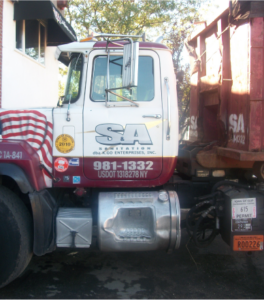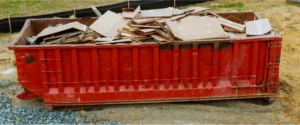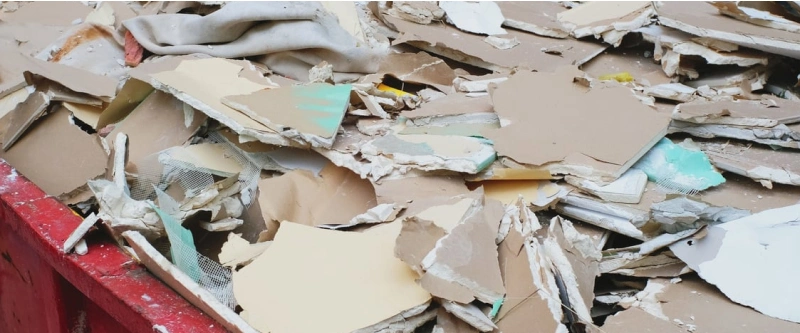 Home renovation, construction, and demolition projects are exciting endeavors that allow you to transform your space into a more functional, stylish, and personalized environment. However, when undertaking such big projects, dealing with a heavy amount of old drywall and plaster is challenging.
Home renovation, construction, and demolition projects are exciting endeavors that allow you to transform your space into a more functional, stylish, and personalized environment. However, when undertaking such big projects, dealing with a heavy amount of old drywall and plaster is challenging.
These materials are easier to pull down but more difficult to dispose of and recycle. They cannot be disposed of directly in the regular trash or in the majority of landfills. Improper disposal of drywall and plaster items can cause environmental issues such as groundwater pollution and bad odors.
Whether you are a homeowner working on a major remodel or a contractor managing a large construction project, these materials are difficult to dispose of without proper knowledge. Therefore, in this blog, we are going to discuss the most effective ways to dispose of old drywall and plaster in a safe and environment-friendly manner. From recycling and reuse to transfer stations and dumpster rentals, we are going to discuss every method in detail. Correct disposal keeps your space clean, productive, and safe for you and your labor.
How to Dispose of Old Drywall and Plaster?
By now, you might have understood that old drywall and plaster are not suitable for direct disposal in landfills or regular trash. So, it’s time to know how to dispose of them correctly in an eco-friendly manner while adhering to local rules and guidelines. Have a look at the proper disposal methods for old drywall and plaster:
Check Local Regulations
The first and most important thing is to contact your local waste management or municipal office and ask for the specific guidelines for drywall and plaster disposal. The guidelines vary based on your location; some cities accept their direct disposal at landfills, while some don’t. Therefore, check before choosing the disposal method.
Reuse and Repurpose
Old drywall and plaster can be used for different purposes, including:
Construction Projects: Old drywall can be used to repair gaps and cracks in the wall or ceiling, making it a good option for minor repairs in construction projects. Just like drywall, even plaster can be used for patchwork after proper breakdown down, like for filling cracks and holes.
False Floors: If you plan to raise the ground level a bit to make the floor look stylish and aesthetic, plaster can be used as a filling for that purpose.
Give a DIY Spin: If you are creative, consider using old drywall and plaster for DIY purposes. This includes creating wall niches, candle holders, extra cabinets, fun tiles, stepping stones, jewelry box, a decorative partition, art installations, garden bedding, and more.
Reduce the Amount
One of the simplest and most effective ways to dispose of old drywall and plaster is to avoid creating excess waste in the first place. Most home improvement stores offer different sizes and quantities of drywall and plaster to choose from. By carefully measuring your space and purchasing the correct amount of these materials, you can significantly reduce the amount of waste generated. This innovative approach not only saves costs but also reduces the environmental impact of your project, turning you into a responsible homeowner or contractor.
Recycling Old Drywall & Plaster
One of the best ways to dispose of old drywall and plaster is by recycling it in the proper way. To do that, consider the following:
Find Recycling Centre: Your city must have many recycling centers that accept construction debris, including drywall and plaster. Contact them and ask for details such as quantity limits, drywall and plaster conditions they accept, etc. They generally recycle the trash and turn it into new gypsum products.
Prepare the Materials: Recycling centers do not accept drywall and plaster with contaminants like paint, adhesives, oil, and other substances. Therefore, make sure to remove them and then break down the large pieces into smaller and more manageable chunks.
Utilize Municipal Programs: Some local waste management services offer curbside pickup and drop-off services for construction and demolition debris. Besides that, you can even go for renting a dumpster that accepts both drywall and plaster for recycling.
Specialized Programs: Many cities have specialized programs for drywall recycling, where they turn it into new gypsum products and soil amendments. Plaster recycling is less common, but you should check if there are any facilities and programs where plaster can be turned into new products.
Compost
Used drywall contains 90% gypsum, which lowers the soil’s pH level and can be used as a natural soil fertilizer in gardening. Composting drywall not only helps dispose of it in an eco-friendly manner but also renews the ground, improves the soil and drainage, increases its fertility, and makes it nutritious for various plants. You can simply grind the old drywall and sprinkle it on the ground.
Dispose of Drywall & Plaster Using a Dumpster
The best way to get rid of large quantities of old drywall and plaster is by renting a dumpster. The rental companies accept construction debris and ensure correct disposal in an environment-friendly manner. You just have to contact the company, tell them your requirements, book the right size dumpster, fill it with construction debris and schedule the pickup.

However, make sure to place drywall and plaster separately from other construction debris to avoid complicating the recycling and disposal process for the dumpster rental company. In addition to that, follow the rental company’s rules and guidelines for disposing of construction debris.
Share it with Others
Another simple way to dispose of old drywall and plaster is to share or sell it to someone who needs it. To do that, get in touch with contractors in your area and ask if they are looking for some extra drywall or plaster. As per the quantity, give them for free or at a minimal cost. If the drywall is in good condition and shape, you can even use the online marketplace to find buyers. Besides that, consider donating the leftover drywall and plaster to some social organization, that can use them for construction and repair work.
Local Landfills and Transfer Stations
Landfills: Some local landfills or waste management companies accept old drywall and plaster but charge fees. Therefore, check with the local landfills to see if they accept construction debris. To do that, contact local authorities or use an online directory to find the nearest landfill that accepts construction debris.
Transfer Stations: Transfer stations are an ideal place to drop off your old drywall and plaster if there is no other option available. They often accept all kinds of construction debris, including drywall and plaster, and dispose of them in the correct manner.
Is Drywall and Plaster Toxic?
A drywall is only harmful when the dust created from knocking it out of the wall is inhaled. It’s important to wear a mask to avoid breathing in this dust, as it can irritate your eyes, nose, and throat. Besides that, gypsum that is found in drywall is not toxic but is a great environment for harmful microorganisms to thrive.
Therefore, when it is directly thrown in the landfill, the microbes on it decompose gypsum into hydrogen sulfide, a hazardous gas that degrades the groundwater and environment and causes a foul odor. This is the reason many local municipalities have banned the direct disposal of drywall into landfills.
Plaster, on the other hand, is not harmful when filed to a wall or when parts break off. However, breaking plaster without protective gear can release harmful dust, which can cause lung diseases and respiratory problems. Besides that, plaster does not decompose directly, and throwing it directly into the landfill can cause water pollution. In addition, modern plasters contain contaminants like lead paint and asbestos, which are hazardous to the environment.
Therefore, it’s important to separate plaster and old drywall from general waste and dispose of them carefully and correctly.
Effective Tips for Safe Disposal of Old Drywall and Plaster
Check Local Regulations: Always check the local rules and regulations for disposing of any kind of waste material to avoid paying fines and getting into legal trouble.
Separate Materials: When you hire a dumpster for effective waste disposal of construction debris, keep old drywall and plaster separately to make recycling easier.
Dust Control: When cutting or breaking the drywall, use a mask or respirator to prevent harmful dust inhalation, as it can cause health problems.
Protective Gear: Wear gloves, and full clothes to protect yourself from sharp edges and safety glasses to protect your eyes.
Landfill Charges: Most landfills that accept old drywall and plaster charge fees according to the weight or amount of waste. Therefore, make sure to check that before taking old drywall and plaster to the landfill location.
Recycling Fees: Some recycling centers even charge fees for recycling materials like old drywall and plaster. So, check the fees before choosing the disposal method.
Why choose S&A Container Service for Dumpster Rental?
At S&A Container Service, we specialize in providing well-maintained, high-quality dumpster rentals to make your waste management process a breeze. We offer various dumpster sizes, from a small 6-ft dumpster to a big 40-ft one, catering to your needs and project requirements. Our dumpsters can handle various types of debris, including building materials such as old drywall and plaster, as well as household items such as cardboard, furniture, plastic, etc.
Moreover, our flexible rental durations fit your schedule, whether you need a dumpster for a single day or 21 days. Our fair pricing, timely delivery and pickup, excellent customer service and flexible rental period make us a prominent choice for dumpster rentals.
Conclusion
Old drywall and plaster are common during construction and demolition projects. However, disposing of them directly at the landfill is not an option in every city. This makes it important for you to opt for some alternative to dispose of them in compliance with the local rules and regulations.
From recycling and reusing to renting a dumpster and composting, we have discussed some of the best ways to dispose of old drywall and plaster. Along with that, we have also mentioned some effective tips to ensure safe and affordable disposal. So, follow the tips and choose the right way to dispose of old drywall and plaster in an environmentally friendly manner.
FAQs
Can I use a dumpster rental to dispose of drywall and plaster?
Yes, renting a dumpster is one of the most convenient and easiest ways to dispose of large amounts of drywall and plaster during construction and demolition. Choose the right dumpster size for your project scope and easily dispose of the drywall and plaster.
Can I burn old drywall and plaster?
No, burning drywall and plaster is not an environmentally friendly disposal method, as they release harmful chemicals when burned. Therefore, they should be recycled at the center or disposed of in a dumpster for proper recycling.
What is the average rental time for a dumpster at S&A container service?
A dumpster rental period typically lasts between 7 and 21 days. However, we also provide variable rental terms and accept extensions as needed.
Do I need a permit to place a dumpster on my property?
The municipal laws of the city and dumpster rental companies differ, so it’s important to enquire with both. Most localities do not require a permit as long as the dumpster is kept on private property.



